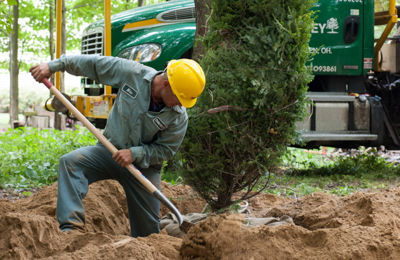Comprehending the Significance of Tree Conservation and Preservation Practices in Urban Areas
In the dynamic landscape of metropolitan environments, trees usually stand as quiet guardians, supplying a plethora of advantages that expand much beyond their visual appeal. As we explore the interwoven textile of environmental, social, and economic benefits that metropolitan trees offer, it ends up being apparent that their conservation is pivotal for the well-being of future and present generations.
Ecological Benefits of Trees in Cities
Trees in urban locations play a crucial duty in offering numerous ecological advantages, contributing to the overall health of city dwellers. This procedure assists minimize the focus of hazardous gases, making the air cleanser and healthier for homeowners.

Furthermore, trees contribute to water monitoring by lowering stormwater overflow and soil erosion. Their root systems absorb excess water, protecting against flooding and filtering pollutants prior to they reach water bodies. This natural procedure helps maintain water top quality and safeguards aquatic communities in metropolitan locations. Generally, the environmental benefits of trees in cities are necessary for developing sustainable and comfortable metropolitan settings.
Social Value of Urban Tree Preservation
In modern urban landscapes, the preservation of trees holds considerable social value for cultivating community well-being and boosting top quality of life. Urban tree preservation plays a vital duty in creating rooms for social communication and community interaction.

Economic Worth of Tree Conservation
The preservation and conservation of urban trees provide considerable financial advantages that add to the general financial health of neighborhoods and cities. Urban trees give a large range of financial advantages that positively impact regional economic situations. One significant economic benefit of tree conservation is the increase in building worths. Trees enhance the visual allure of areas, causing higher residential or commercial property values and bring in possible customers or tenants. Metropolitan trees aid lower energy prices by supplying shade in the summer season and acting as windbreaks in the winter season, thus decreasing the demand for home heating and cooling systems.
Furthermore, trees play an essential function in lowering stormwater drainage and alleviating the effects of flooding, which can lead to cost savings for cities in terms of framework maintenance and repair work. Urban trees additionally add to improved air top quality by releasing and soaking up toxins oxygen, causing potential cost savings in health care costs connected with respiratory system ailments. By investing and identifying in the economic value of tree preservation, cities can advertise sustainable development, enhance lifestyle, and produce more resistant metropolitan atmospheres.
Strategies for Sustainable Urban Tree Monitoring
A comprehensive strategy to lasting metropolitan tree administration entails incorporating diverse approaches that prioritize long-term environmental wellness and area wellness. Executing tree stocks and assessments is critical to recognize urban tree populaces, their health and wellness, and maintenance demands.
Area engagement plays an essential function in sustainable metropolitan tree monitoring. Enlightening homeowners concerning the benefits of trees, arranging tree growing events, and including volunteers in tree care tasks fosters a sense of ownership and stewardship. Collaboration between city government, ecological organizations, and citizens is vital to establishing and applying efficient tree management strategies.
Spending in environment-friendly framework, such as eco-friendly roofings and city woodlands, can supply multiple benefits, including enhanced air top quality, stormwater monitoring, and urban heat island mitigation. tree removal. Incorporating trees right into city preparation and design procedures ensures that trees are valued as important elements of a healthy and resilient urban atmosphere
Neighborhood Involvement in Tree Conservation
Community involvement is a basic part in promoting lasting urban tree administration techniques and making certain the lasting health and wellness and preservation of city tree populations. Involving the neighborhood webpage in tree conservation campaigns can Recommended Reading cause raised understanding, gratitude, and stewardship of trees within urban areas. When citizens proactively take part in tree planting, upkeep, and conservation efforts, they create a feeling of possession and pride in their regional setting.
Neighborhood participation likewise advertises social cohesion and partnership amongst homeowners, local authorities, and environmental companies, fostering a shared duty for city tree preservation. By arranging tree planting occasions, instructional workshops, and volunteer chances, areas can interact to improve the urban tree cover and develop greener, much healthier cities. Including citizens in decision-making processes relating to tree administration guarantees that varied viewpoints and neighborhood understanding are thought about, leading to more efficient and sustainable conservation methods. Eventually, neighborhood participation plays a crucial function in building resilient and growing metropolitan woodlands for future generations to enjoy.
Conclusion
To conclude, city tree preservation and conservation practices play an important function in boosting the environmental, social, and economic health of cities. By identifying the value of trees in metropolitan locations and implementing lasting administration strategies, communities can take pleasure in the various advantages that trees offer. It is crucial for stakeholders to proactively join tree conservation initiatives you can try here to make sure a greener and much healthier metropolitan atmosphere for existing and future generations.
